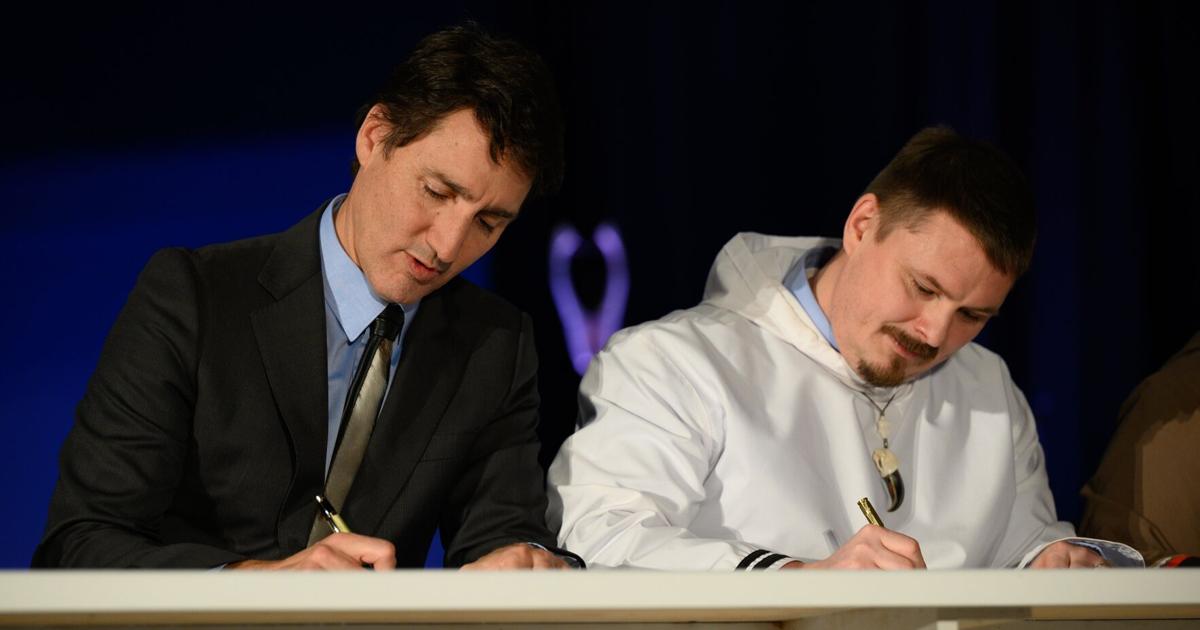- cross-posted to:
- world@lemmy.world
- cross-posted to:
- world@lemmy.world
OTTAWA — Nunavut signed an agreement with the federal government Thursday that transfers responsibility for land and natural resource management to the territory, marking the largest land transfer in Canadian history.
The “devolution” agreement means the power to make final decisions for two million square kilometres of public lands, including onshore waters, and natural resources — as well as the royalties from the extraction of those resources — now belongs to the territorial government.
In a ceremony in Iqaluit that featured the Inuktitut language, traditional singing, dancing and drumming, Prime Minister Justin Trudeau signed the agreement along with Northern Affairs Minister Dan Vandal, Nunavut Premier P.J. Akeeagok and Nunavut Tunngavik Incorporated president Aluki Kotierk.
“Devolution is about Nunavummiut making decisions about our lands and our waters. It means that we, the people most invested in our homelands, will be one of the ones managing our natural resources,” said Akeeagok.
“Our people have made many, many sacrifices in the name of Canadian sovereignty. In the past, too many decisions about us were made without us. With the signing of this very historic agreement, we could now bring decision-making home right here.”
Nunavut represents 20 per cent of Canada’s land mass.
The final devolution agreement with Nunavut is the latest step in a process that officially began in 2008 with the Lands and Resources Devolution Negotiation Protocol. However, the transfer discussions have been ongoing since the creation of the territory in 1999 under the Nunavut Act.
Nunavut, Nunavut Tunngavik Inc. and the federal government had signed an agreement in principle for devolution in 2019, which served as a guide for the negotiation of the final agreement.
The federal government has been working on transferring responsibilities including health, education, social services, housing, airports and land and resource management to the territories since the 1960s.
Devolution of land and natural resource management took place in Yukon in 2003 and in the Northwest Territories in 2014.
“Today begins a new chapter in the history of Nunavut. A transformative chapter,” Trudeau said, adding that this process is not just a “devolution” but an “evolution in our partnership as the federal government and the territory and also an evolution in the progress towards self-determination for Inuit living in Nunavut.”
“I am here to celebrate devolution as recognition that Inuit have long been stewards of these lands and that your voices matter and decision making is finally coming home,” Vandal said.
The Nunavut agreement includes a three-year implementation period to allow time for passing legislation and the transfer of responsibilities.
The agreement also comes with $15 million in transfer payments over five years for implementation and to work toward representative Inuit employment in government.
“If we had backed down from the challenges, we would not be here celebrating this historic moment today. The road ahead will be very difficult, and we will face many obstacles but our vision for the future is very clear,” Akeeagok said.
“It is our time, our territory, our decisions and our future.”



Or put in an other way: how much more devolution is needed to make Nunavut a province?